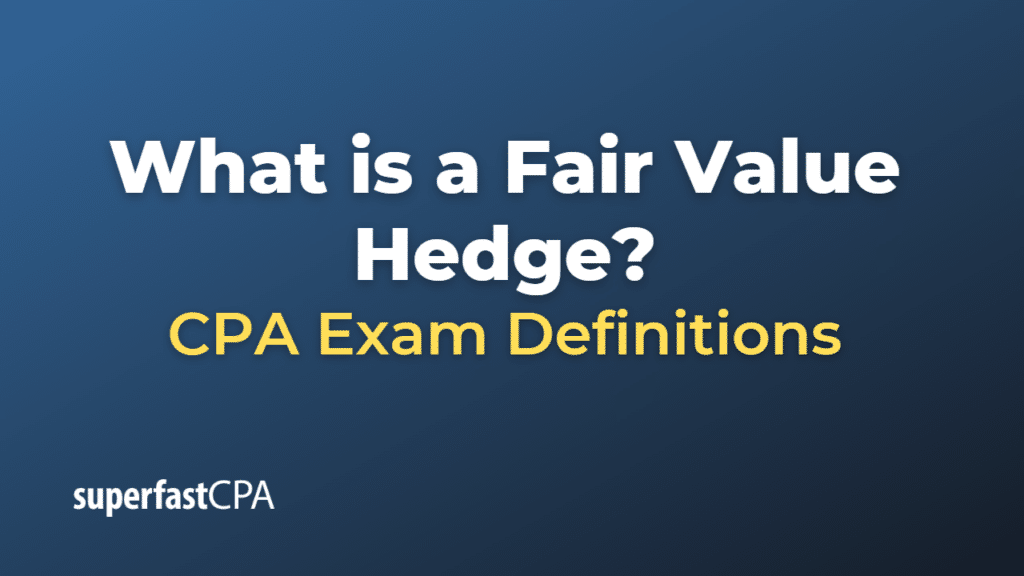Fair Value Hedge
A fair value hedge is a type of financial hedge that companies use to mitigate or “hedge” the risk of changes in the fair value of an asset or liability, or a specific portion of an asset or liability. The purpose of a fair value hedge is to protect against potential losses due to changes in market prices.
When a company enters into a fair value hedge, it uses a derivative or other financial instrument to offset the risk of price changes. The changes in the fair value of the hedging instrument are designed to counterbalance the changes in the fair value of the hedged item.
For example, let’s say a company has issued bonds with a fixed interest rate, and it’s concerned that rising market interest rates will increase the fair value of its obligation (the bonds), resulting in a loss. To hedge this risk, the company could enter into an interest rate swap contract, where it agrees to receive a fixed interest rate and pay a variable interest rate.
If market interest rates rise as feared, the fair value of the company’s bond obligation will indeed increase, resulting in a loss. However, this loss will be offset by a gain on the interest rate swap, because the value of receiving fixed interest payments has increased in a higher-interest-rate environment.
In the company’s financial statements, both the gain or loss from the change in the fair value of the hedged item (the bonds) and the offsetting gain or loss from the hedging instrument (the interest rate swap) are recognized in earnings in the same period. This helps to smooth out the volatility in earnings caused by changes in market prices.
Fair value hedges are governed by specific accounting rules that dictate how they must be documented and accounted for. This includes having a formal hedge designation and effectiveness testing to qualify for hedge accounting.
Example of a Fair Value Hedge
Let’s use a practical example involving a manufacturing company, “Machinery Inc.”
Machinery Inc. has a significant amount of debt with a fixed interest rate. This is represented in the form of bonds payable on their balance sheet. The company’s management believes that interest rates in the economy will rise significantly in the near future. If that happens, the fair value of the company’s fixed-rate debt will increase (because new bonds issued would have to pay higher interest rates to compete), representing a loss for the company.
To protect itself against this risk, Machinery Inc. enters into an interest rate swap agreement. In this agreement, Machinery Inc. agrees to receive a fixed rate and pay a variable rate that fluctuates with the market interest rate.
Now, if the market interest rates do rise, the fair value of Machinery Inc.’s fixed-rate debt will indeed increase. However, the company will gain on its interest rate swap because the value of receiving fixed interest rate payments (which are now higher than the market rate) has gone up.
So, if Machinery Inc.’s fixed-rate debt increases in value by $100,000 due to rising interest rates, this would ordinarily represent a loss to the company. But the interest rate swap might simultaneously gain $100,000 in value, thus offsetting the loss. Both the loss on the bonds and the gain on the swap are reported in the income statement, resulting in no net impact on earnings from the interest rate change.
This is a simplified example of a fair value hedge. The actual accounting can be more complex, particularly when it comes to determining the effectiveness of the hedge and the portion of the gain or loss on the hedging instrument that can be recognized in earnings.













